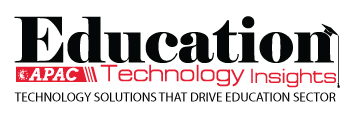THANK YOU FOR SUBSCRIBING
Be first to read the latest tech news, Industry Leader's Insights, and CIO interviews of medium and large enterprises exclusively from Education Technology Insights
From Vision to Impact, Reimagining Learning Spaces
Robert Dillon, Director of Innovative Learning, School District of University City
 Robert Dillon, Director of Innovative Learning, School District of University City
Robert Dillon, Director of Innovative Learning, School District of University CityDr Robert Dillon is an experienced education leader and Chief School Designer with over two decades in innovative learning environments. With a doctorate in Educational Leadership from Saint Louis University, he brings deep expertise in K–12 education, literacy, and instructional design. As founder of Sustainable Education Solutions and former Director of Innovative Learning, he champions sustainable, student-centered strategies that empower educators and transform schools.
As Director of Innovative Learning, what core beliefs and formative experiences have shaped your vision for future-ready education?
My core belief is that every student deserves access to engaging, relevant learning experiences that prepare them not just for the next test, but for the future they will help shape. That belief was shaped early in my career, when I saw firsthand how disengagement often stemmed from rigid instructional models that did not reflect students’ real-world experiences or needs. Over time, I have had the opportunity to lead work across curriculum, instruction, and technology integration, and those experiences have reinforced a central truth: innovation is not about shiny tools; it is about empowering students and teachers with purpose, flexibility, and voice. I believe sustainable change happens when we root innovation in strong instructional practices, support it with thoughtful design, and build the systems that allow it to scale over time.
What does “innovative learning” truly mean in the context of today’s K–12 classrooms, and how are you helping educators bring that vision to life?
“Innovative learning” is about creating spaces where students can think critically, collaborate meaningfully, and apply their learning in ways that are relevant to the world outside the classroom. It is not just about using new tools; it is about rethinking how we structure time, use space, and approach content. I support educators in this work by building frameworks that align innovation with curriculum standards and instructional goals. That means co-designing professional learning experiences, modeling blended learning strategies, and helping teams reflect on how technology can enhance, not replace, powerful teaching. I also work closely with school leaders to ensure we are not asking teachers to innovate in isolation, but as part of a culture of collaborative growth.
“Innovation is not about shiny tools; it is about empowering students and teachers with purpose, flexibility, and voice”
What are some of the biggest challenges you face in driving innovation at the district level, especially when balancing legacy systems, limited budgets, and varied stakeholder expectations?
One of the biggest challenges is navigating the tension between tradition and transformation. Many legacy systems, whether structural, instructional, or technological, were not designed to support the kind of flexible, studentcentered learning we know is best. Add in limited budgets and a range of expectations from families, teachers, and the community, and change can feel slow. To address this, I focus on building alignment across departments, listening deeply to all stakeholders, and identifying small wins that build momentum. I also advocate for strategic budgeting, using available funds to support scalable pilots, professional development, and infrastructure that truly supports instructional goals. Sustained innovation happens when it is tied to a clear “why” and when people feel supported, not overwhelmed.
What ed-tech trends or tools are you most excited about now, and how do you assess their long-term value for schools?
I am especially excited about tools that support learner agency, platforms that allow students to create, reflect, and collaborate in meaningful ways. Tools that support formative feedback, like AI-driven writing assistants or adaptive learning platforms, are promising when used thoughtfully. But I always approach new tools with a lens of long-term impact: Does it solve a real instructional challenge? Can it be scaled equitably across classrooms? Does it respect student privacy and teacher time? Ultimately, I believe tech should amplify strong teaching, not distract from it. That is why my evaluation process always includes pilot feedback, teacher input, and alignment with our broader vision for learning.
What advice would you offer fellow education leaders seeking to build innovative learning cultures within their schools or districts?
Start by listening. Innovation that is disconnected from the voices of teachers and students is rarely sustainable. Build a culture where experimentation is safe, failure is part of growth, and professional learning is embedded, not an add-on. Align innovation with your district’s core values, and be relentless about clarity: Why are we doing this? How does it support students? What will success look like? Lastly, do not underestimate the power of modeling. When leaders engage in learning, take risks, and share their own growth, they set the tone for the kind of culture where true innovation can thrive.
Read Also
Empowering Educators through Purposeful, Connected and Transformative Learning
Empowering Students to Lead: A New Vision for Civic Learning
The Director's Playbook: Strategic Digital Transformation in Rual Hyper-Growth Districts
The Art and Architecture of Student Support
From At-Risk to At-Promise: The Language Revolution Higher Education Needs
Teaching Tomorrow: How Western Governors University Is Redefining Teacher Preparation

I agree We use cookies on this website to enhance your user experience. By clicking any link on this page you are giving your consent for us to set cookies. More info

However, if you would like to share the information in this article, you may use the link below:
www.educationtechnologyinsightsapac.com/cxoinsights/robert-dillon-nid-3304.html





















